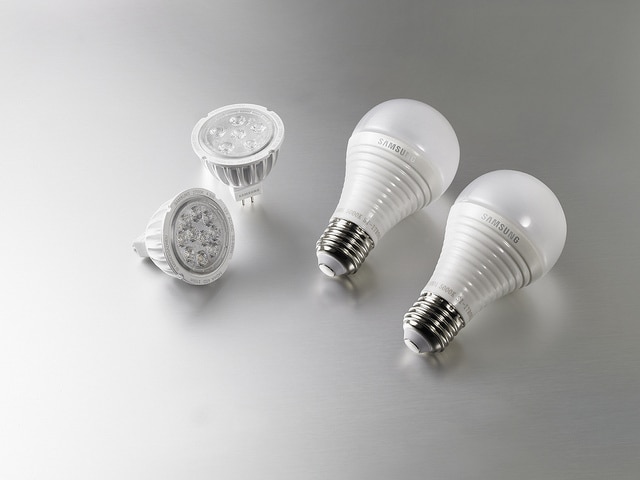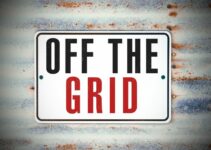Running a business can be a difficult venture. It can become even more difficult when you consider the different types of costs you’ll run into when you’re starting up. Employee salaries, benefits, products, rental space and much more – all of these factors can impact your budget and will have to be taken into consideration when you’re creating and running your business. However, something many people don’t consider is the cost of energy and efficiency when you’re operating.
Electricity, hydro, water and gas can be costly as well, especially if you’re working long days or have a wealth of these different energies throughout the week. In order to reduce costs in your business when it comes to energy, there are a variety of different factors you need to consider. By assessing the needs of your employees and your customers when it comes to providing quality and standard energy, you’ll be able to make a plan that helps you cut costs where you need it the most.
Some essential tips come from the way you are already choosing to operate. Ask yourself this list of questions and consider the answers you come up with; many people are surprised that what they do on a day-to-day basis for their business can actually have a great influence over their energy costs.
- Are there always lights on in your business?
- How long are the lights on for? 9 a.m. to 9 p.m.?
- Is the heat always on during the winter?
- Is the air conditioner always on during the summer?
- Are you doing anything already to eliminate the need for a heater or AC unit?
- What type of atmosphere are your employees comfortable in?
- Are there any alternatives you can provide them when you’re moving forward?
- Are the lights turned off at the end of the night?
- Do you have backup security lights in case?
These questions and many more are the essentials that business owners should be asking themselves when they are looking to change the way they spend on energy. If you’re not aware of any of the following questions, then you need to re-examine exactly how you’ve lost track of the energy usage so far. As a result of constant energy usage within your business, not only are you adding unnecessary costs to your budget, but you’re also emitting additional carbons on the environment and having a serious negative impact on the way it functions.
25+ Energy Saving Tips To Reduce Business Energy Costs
You can even use this opportunity to promote different kinds of energy change within the office. Here is a list of 30 things you can do with your employees to promote energy conservation while at work:
1. Establish energy-efficient practices: Depending on the utility company you are paying, they usually have off to high peak times during the day. Try your best to only use excess energy during the low or off-peak times. Encourage your employees to follow this same model and see how energy usage decreases with more initiative.
2. Get an energy audit done: Hire an energy audit company and let it do an energy audit of your office. Many utility companies offer a free energy audit program to ensure that you are using energy efficiently. Give them a call and see if they can help you identify areas to trim down your energy needs.
3. Replace existing bulbs with CFL’s: CFL and LED lights consume less power and offer much longer lifespans. Commercial lights qualified by the DesignLights Consortium (DLC) or Energy Star can ever reduce energy consumption by up to 75% and increase the lifespan of your fixtures by 2-3 times.
On top of the benefits, you will realize by converting to LED (or CFL), you could also save a lot by replacing the luminaire only instead of the entire fixture. This is also known as retrofitting, which can be virtually be done in any existing fixture with any lighting technology. By retrofitting, you will reduce costs by cheaper light costs along with easier installations.
4. Use the hibernation feature of computers and laptops: Hibernate feature in laptops and desktops allows you to save your existing work as it is, and you can continue from the same point the next day. Schedule your workstation to switch to hibernate mode after working hours and during weekends.
5. Reduce Paper Wastage: Print only when necessary. This will not only reduce paper wastage but also helps to cut the energy required to run the printer, which in turn reduces your energy cost and makes life of your printer longer.
6. Switch off equipment when not in use: Make sure that you switch off all printers, scanners, microwaves, lights, air conditioners, coffee vending machines during weekends or holidays. They continue to draw power even if they are plugged in. Switching them off after working hours will conserve energy and reduce your energy bill.
7. Buy energy-efficient devices: Energy-efficient devices cost more upfront, but over years of use, they’re going to save you money. This holds true for any equipment that runs on electricity – spending a little more can result in significant savings over the years.
8. Invest in a programmable thermostat: A programmable thermostat has the capability to automatically adjust the temperature of your workplace when no one is working. Place the thermostat away from drafts, direct sunlight and mechanical equipment such as photocopiers, computers etc. Less use of air conditioning by opening a window or building a door for natural airflow can result in significant savings for your business.
9. Control the temperature: Controlling the room temperature is crucial to saving money on your energy bill. It is recommended to cool your environment to 25ºC in summer and heat it to 20ºC in winter for optimal energy savings. Every 1-degree increase in thermostat setting in winter will use 15% more energy. Every 1-degree decrease in summer will use 10% more energy. There’s also no point heating or cooling an area that is rarely used, such as storage rooms, cleaning rooms etc.
10. Lookout for small drafts that may leak the air: Small drafts can result in businesses losing substantial portions of their heating and cooling costs. Proper air sealing of the work environment can eliminate those drafts.
11. Check your doors and windows: For windows, fit the reflective film, external shutters and internal blinds to reduce the amount of sunlight entering the building. Fit auto door shutters and draft excluders. Sealed doors are better for cooling in the summer and keeping the heat in during the winter.
12. Treat roof & ceiling properly: Ceiling insulation is an essential part that helps in cooling your property in the summer and keeping it warm in the winter. Correctly installed loft insulation can keep indoors up to 10 degrees cooler during summer months. Also, consider fitting suitable roof tiles to reflect the sun’s rays. Paint the roof with heat reflective paint. This will reduce the amount of heat absorbed into the building during the summer months.
13. Keep control of your heating and cooling: Keeping your office temperature one degree down during winters and one degree up during summers can reduce the power it uses by up to 10%.
14. Water Heater Insulation: If your business’s water heater is older than seven years, insulate your water heater to retain water heat. Regardless of whether your water heater is old or new, insulate the first three feet of the heated water out pipe. If necessary, upgrade to the most energy-efficient model water heater. If your water heater is not used frequently, consider a tankless model to reduce standby storage costs and waste.
15. Set your water temperature: Save money by setting your water heater at an optimal temperature. Set the water temperature between 110 and 120 degrees or only as hot as needed to prevent scalding and save energy.
16. Minimize artificial lighting and make use of skylights: Artificial lights consume power, while skylights are free. Try to use maximum daylight and use artificial lights in areas that are dark. Less energy means less money spent on electricity bills.
17. Use energy-saving features: Educate your employees regarding energy-saving features of air conditioners, printers, microwaves and let them use those features to cut energy costs. Discard old gadgets if they don’t have it and buy energy-efficient peripherals.
18. Upgrade all outdated equipment with energy star appliances: If your old heater or air conditioner is not working at its maximum efficiency, it could draw unnecessary power, which may cost you money. Replace your decade-old heaters and air conditioners with energy star ones.
19. Tune-up your HVAC system: Even an ENERGY STAR-qualified heating, ventilation and air-conditioning (HVAC) system cannot perform well without regular maintenance. An annual maintenance contract ensures tuning-up that HVAC system before each cooling and heating season and the system last longer with minimal repair costs.
20. Change or clean your HVAC filters regularly: Change or clean your HVAC filters every month during peak cooling or heating seasons. The more you use air-conditioning and heating, the more air and particles are being run through your HVAC system. Dirty filters cost more, overwork your equipment and result in lower indoor air quality.
21. Proper refrigeration: Purchase a fridge or freezer with high energy efficiency ratings and see it is suitable for its purpose. Place freezers and fridges out of direct light. Regularly clean Motors, fans, hinges, condenser coils. Check the seals on doors, and closing mechanisms are all in good condition. Defrost the freezer regularly to avoid the buildup of ice.
22. Stocking a freezer or fridge: Keep the appliance well stocked. Avoid overfilling or underfilling a fridge/freezer as it leads to inefficiencies and greater energy consumption. Don’t re-stock during the hottest part of the day. Fill any large spaces with empty cardboard boxes to reduce the loss of cold air when opening the door).
23. Consider installing solar panels: Solar energy is free, clean and renewable source of energy. Solar panels might cost expensive initially, but that cost can be recovered within a few years if solar energy is used up to full strength. Solar panels last longer and have few maintenance problems. This will help you to bring down your monthly electricity bill.
24. Plant shady trees outside your office: Shady landscaping outside your office can protect it from intense sun during summers and chilly winds during winters. The tree and its leaves will protect your office from the sun’s rays, and less cooling would be required. If your office already has proper insulation and energy-efficient appliances, the effect will be much smaller.
25. Use technology to hold virtual meetings: New technologies like Webex and Skype allows you to hold virtual meetings, give presentations and make long-distance phone calls without even going to the client’s office. You can surely save money on the amount of gasoline or flight tickets that would be used to buy it.
26. Allow employees to work from home on alternate days: Give your employees an option to work from home on alternate days. With VPN technology, an employee can connect to the office network safely and securely. With less employees in office, less lighting and cooling would be required. Technology gives employees the advantage of flexible work arrangements.
27. Discourage the excessive use of lighting or electricity: Switch off extra lights at corridors, stairs, cafeteria, reception, meeting rooms and near workstation. Try to make use of daylight as much as possible.
28. Encourage employees to take part in brainstorming sessions: Saving energy is not the sole responsibility of business owners. Employees must be delegated responsibility to come out with their own innovative ideas to cut down energy costs. Employers often underestimate the ideas of their employees, so having an open dialogue about the things that could be changed about energy usage in your business is very important. This will allow you to create an energy-efficient work culture in your company.
29. Take advantage of tax breaks for energy efficiency: Local government may provide tax incentives when you buy energy-saving appliances for your business use that helps to reduce your energy usage. Even some public utility companies offer rebates for energy-saving measures.
30. Seek expert guidance: As businesses remain busy and energy markets move quickly, business owners may miss taking advantage of beneficial prices. Depending on your business size and type, it may make sense to seek assistance from an energy advisor to get more information on how strategic energy services can potentially benefit your business. They can also provide you with an additional layer of expertise and guidance to leverage pricing that’s more closely aligned with the markets.
By considering these crucial steps above, you’ll be able to see immediate changes in your energy bill the next month. People often underestimate the little things they do at work, so promoting awareness and consciousness about energy issues is very important. Not only will you be decreasing the amount you have to pay each month, but you’ll also be promoting a healthy environment within your own workplace.







